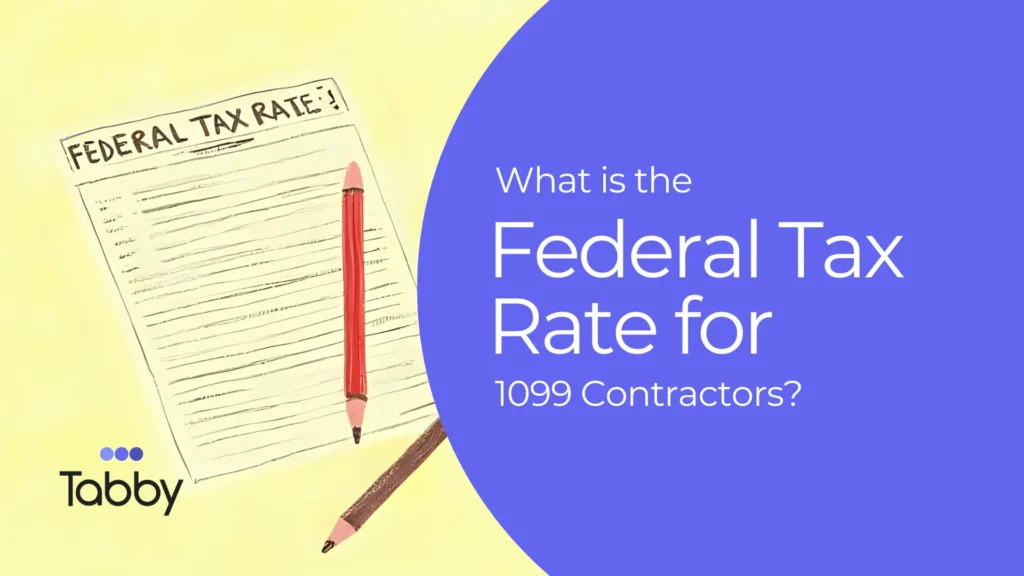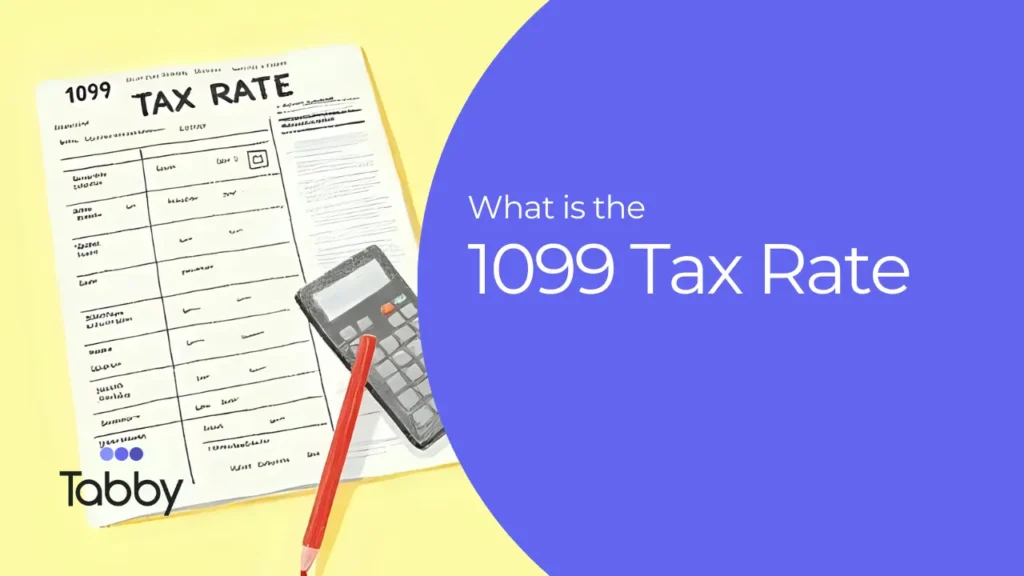- Tax Preparation,
- | October 17, 2025
1040 vs 1099: What is the Difference?

Now, when it comes to tax forms, I don’t expect a regular person to know what all the tax forms are. That’s why there are professionals like myself, as a CPA, who help educate people through my TikTok, my social media, and these blog articles.
But if you are someone who is self-employed working on a 1099, you have to know the difference between these two. Otherwise, it’s going to create a mess in your taxes. So I’m going to cover those right now.
What is a 1040?
A 1040 is the federal tax form for individual taxpayers in the U.S. A 1040 is basically where everything is reported when it comes to your taxes; all your income from all sources, all your expenses, tax credits, and tax deductions.
The 1040 can be as simple as two pages, or if you add the schedules and attachments, it can be as big as 200 pages (I’ve had clients like that).
If you’re someone who works on 1099, a 1040 is a must. That is the tax form where you attach your 1099 income. As someone working on 1099, you will have to file what’s called Schedule C (Profit and Loss from Business as a sole proprietor). You attach that Schedule C to the 1040 to file your tax return.
Nowadays, you don’t actually fill out a 1040 by hand. You’re either using a tax software or an accountant/CPA. The 1040 shows all your general information, such as your name, your address, and your bank information for refund or payment.
The 1040 is due by April 15 unless you file an extension. With an extension, it’s due by October 15.
What is a 1099?
A 1099 is a form you receive when you’re self-employed, an independent contractor, a freelancer, or a gig worker. It shows the income that you earned.
There are different types of 1099 forms:
- 1099-NEC for non-employee compensation (most freelancers and contractors).
- 1099-K for payment processors (PayPal, Stripe, Uber, DoorDash, eBay, etc.).
- 1099-MISC for rent, royalties, prize money, and other miscellaneous income.
For 2025, these are issued to you by January 31.
Key Differences Between 1040 and 1099
The key difference you need to know:
- 1099 is your income form: it reports what you earned.
- 1040 is your tax return: the form you file with the IRS.
You take your 1099 income, report it on Schedule C, subtract your deductions, and then that number flows to your 1040. The 1040 is the summary of all your income, deductions, and credits, and it calculates what tax you owe or what refund you get.
Another big difference is timing:
- You receive a 1099 by January 31.
- You file a 1040 by April 15 (or October 15 with extension).
How Self-Employed People Use Them Together
If you are a freelancer, gig worker, or independent contractor:
- You receive a 1099 showing your gross income.
- You report that income on Schedule C.
- You subtract your deductions and write-offs.
- The net income flows to your 1040.
A 1099 is just the starting point. The 1040 is the final tax return.
Example: Realtor
Say you are a realtor working for a brokerage. You earn commission throughout the year, split with the broker, and then keep the rest.
By January 31, your broker issues you a 1099-NEC for your earnings.
If you’ve been using Tabby all year, all your tax write-offs (car, phone, marketing, home office, etc.) are tracked automatically. At tax time, you just pull your report and give it to your accountant.
The accountant takes your 1099 income, reports it on Schedule C with all your deductions, and then that flows into your 1040. The 1040 calculates everything, including income tax, self-employment tax, deductions, credits, and shows your final tax due.
Businesses and 1099s
The 1040 is an individual form. Businesses don’t file a 1040.
- Businesses file other forms: 1120 for C-Corps, 1120-S for S-Corps, 1065 for partnerships.
- Businesses issue 1099-NEC to their contractors.
- Businesses may receive 1099-K from processors.
Though there are some similarities, 1099-NEC and 1099-MISC are different but fall under 1099. In short, businesses deal with 1099s, but individuals always file 1040s.
Common Mistakes to Avoid
- Thinking you “file a 1099.” You don’t. You use it to file a 1040.
- Reporting 1099 income directly on the 1040 without deducting expenses (leads to overpaying).
- Not separating business and personal expenses.
- Waiting until the last minute and scrambling with receipts.
How Tabby Helps
If you’re working on 1099 income, you must track your deductions year-round.
With Tabby:
- Link your bank and credit card accounts (even personal).
- AI finds deductions automatically.
- At tax time, you download a clean report and give it to your accountant (or file yourself).
Tabby saves time, money, and stress. No spreadsheets, no manual work.
Conclusion
It’s important to know the difference between a 1040 and a 1099.
- A 1099 is what you receive showing your income.
- A 1040 is what you file showing your income, deductions, credits, and tax due.
If you’re a freelancer or self-employed, you will always receive a 1099 and then file a 1040. Using Tabby as your bookkeeping sidekick makes sure you’re ready for tax season, saves time, and saves money on taxes.
FAQs
What is the difference between 1040 and 1099?
A 1040 is your actual tax return; that’s the big form you file with the IRS every year. A 1099 is just a source document that shows the income you earned. So you don’t “file” a 1099 by itself, you use it to fill out your 1040. Think of it like this: the 1099 shows what you got paid, the 1040 shows the summary of all your income, deductions, credits, and calculates your tax.
Do freelancers file both 1040 and 1099?
No, freelancers file a 1040, not a 1099. The 1099 is something you receive from a client, a platform, or a bank, and then you take the numbers from that 1099 and report them on your 1040. A lot of people get confused and think they have to “submit” their 1099, but you don’t. You file the 1040 and include the 1099 income in it.
How do I report 1099 income on my 1040?
If you’re self-employed, you report it on Schedule C which goes with your 1040. The 1099 shows your gross income, then you list your business expenses and write-offs on Schedule C to get your net profit. That net profit flows onto your 1040, and that’s what you pay tax on. So basically: 1099 income → Schedule C → 1040.
How can Tabby simplify tracking 1099 income for 1040 filing?
Most freelancers get multiple 1099s, NECs from clients, maybe a 1099-K from PayPal or Uber, and sometimes interest from a 1099-INT. It adds up and gets messy. Tabby pulls it all together for you automatically. It connects to your accounts, finds the income, matches expenses, and gives you a clean report you can drop right into your tax return. That way, when it’s time to file your 1040, you’re not scrambling or worrying if you missed something.




